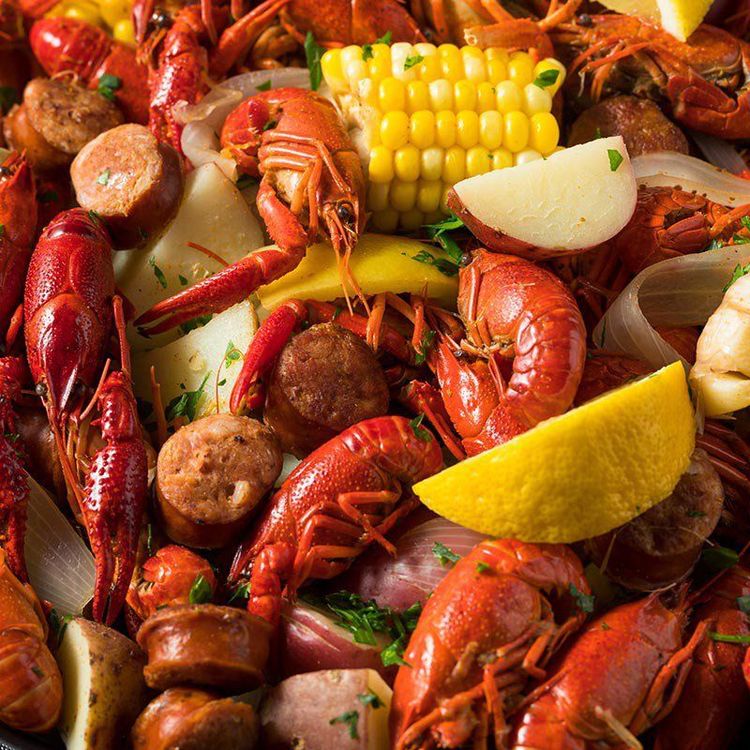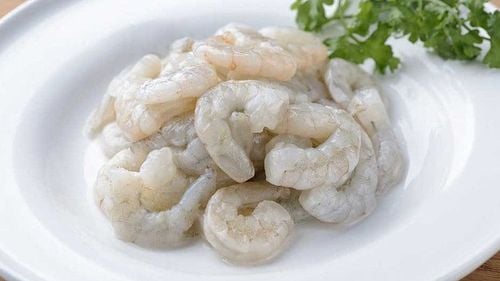Crayfish is also known as red crayfish, originating from North America. Crayfish meat and roe are sweet, high in protein. However, due to its unique characteristics, this species of shrimp is identified as a harmful exotic species and is not bred and developed in Vietnam.
1. What is crayfish?
Crayfish has the scientific name Cherax quadricarinatus, belongs to the group of shrimp originating from North America and is naturally distributed on many continents. There are currently more than 300 species of crayfish around the world, they have a life like crabs and clams. Unlike lobsters, crayfish live in warm freshwater environments, can grow rapidly and withstand drought. The average size of this species of shrimp is from 5.5–12 cm (2.2–4.7 in), weighs more than 50g, and has an average life span of five years.
In Vietnam, crayfish is called by many different names such as red crayfish (due to its eye-catching deep red color), dragon crayfish, freshwater crayfish... According to Dr. Bui Quang Te, Institute of Aquaculture Research I, crayfish was once experimentally raised in Phu Tho province in 2012. However, after determining that this is a harmful exotic species, scientists recommended not to breed crayfish in Vietnam.
2. Nutritional value of crayfish
On the surface, crayfish is a beautiful dish with a red color and long claws. The meat and roe of crayfish are sweet and fatty, with a different flavor from other seafood. Although the meat only accounts for about 15% of the weight of the shrimp, the nutritional value of crayfish is very high, the meat is fatty and sweet, rich in protein. The shell of the shrimp is sturdy, but when steamed or boiled, the shell is easily broken, not as tough as shrimp or as hard as sea crab.
Like other seafood, crayfish is a source of low-fat protein, essential vitamins and minerals. Each kilogram of crayfish contains 14 grams of protein, 70 calories, 115 mg of cholesterol and other nutrients such as Vitamin B6, B12, carbohydrates... Eating crayfish helps you have healthy eyes, and provides nutrients for the nervous system, liver, hair and skin. In addition, the rich source of phosphorus, magnesium and zinc in crayfish meat helps strengthen bones, strengthen muscles and support nerve activity.

3. Why is crayfish breeding banned despite its high nutritional value?
Although the nutritional value of crayfish is high, with its rapid spread, crayfish can become a "disaster" for Vietnam's agriculture and ecosystem.
With large and strong claws, crayfish can cut across rice stalks, eat shrimp, small fish, young tree buds, and is also the cause of spreading white spot virus to shrimp farms. Professor Dang Huy Huynh - Director of the Institute of Ecology and Biological Resources said: "Crayfish can eat all aquatic life, competing for food sources with other organisms. If crayfish invade, typical shrimp and fish species of Vietnam may disappear".
Due to negative impacts on the ecosystem, crayfish have been included in the list of alien species banned from import and development since 2003. Distributing, raising and trading crayfish is a violation of the Law on Biodiversity and will be handled according to Vietnamese law.
To arrange an appointment, please call HOTLINE or make your reservation directly HERE. You may also download the MyVinmec app to schedule appointments faster and manage your reservations more conveniently.




